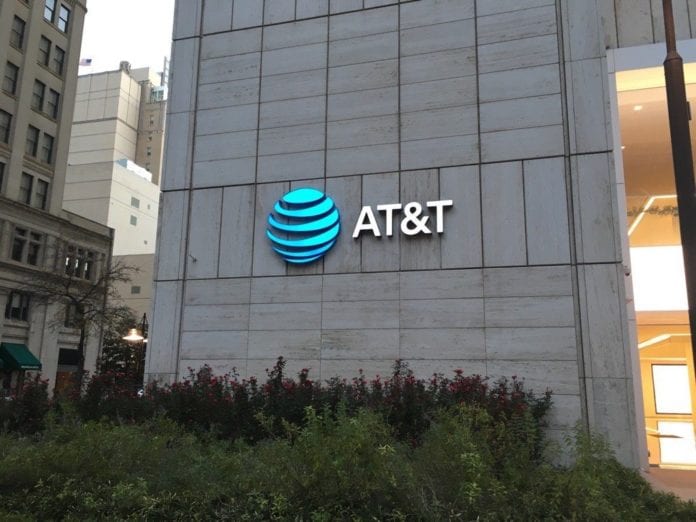AT&T has seen significant shifts in demand due to the global pandemic, and it is looking to build a converged, virtualized fiber-based network that serves multiple customer segments while overlaying millimeter-wave 5G in locations that lend themselves to specific experiences built around 5G.
Igal Elbaz, AT&T’s senior VP of wireless technology, speaking at Oppenheimer’s first 5G Summit, said that backbone traffic has gone up 20% and the carrier has seen a 90% spike in the growth of Wi-Fi calling services, with overall data growth during the pandemic on par with what the carrier would normally expect to see in a 12-18 month period.
He credited the operator’s shift toward virtualization as part of what helped it deal with the rapid traffic changes.
“That was really an essential capability when we went through covid, because there were points in the network where we needed to add capacity quickly, and the fact that we had the infrastructure and the knowledge of how to use virtualization helped us to bring capacity quickly to serve customers,” Elbaz said.
Asked about millimeter wave and AT&T’s plans for how to leverage that spectrum, Elbaz said that at this point in time, three things come to mind as he considers mmWave: How to provide an immersive “experience layer” with low latency and high speed and capacity; supporting enterprise use cases, and fixed broadband. However, not all of those possibilities are priorities for AT&T.
“We’re building mmWave where we think it matters at this point of time, where you can actually build those experiences,” he said. That means entertainment districts and venues, high-density areas, airports and stadiums. The carrier is also focused on supporting emerging enterprise 5G use cases, which he said AT&T is seeing in healthcare, manufacturing, retail and the military for the capabilities, which Elbaz added are “getting a lot of momentum in the marketplace.”
But, he went on, “We’ve never seen the economics of building a standalone mmWave (network) for broadband. When we think about broadband, we think about a set of solutions that help us to serve our customers the way they need it.” He said that AT&T’s investments in fiber are not only popular with customers, but the symmetrical nature of the service has proved valuable to customers are they have been working and learning from home. AT&T, he said, has seen growth in uplink raffic that is more than twice the growth in downlink traffic, so “symmetrical speed is really important for our customers.” While mmWave-based wireless home internet is one way to serve broadband up to customers, he said, “we just think that the good use of your investment is actually building mmWave on our C-RAN deployments. Wherever we build small cells, we want to build mmWave, so the same infra serves both mobility and wireless home internet.” He added that AT&T is also using shared CBRS spectrum for fixed wireless in rural areas and for private networks to serve enterprise, as opposed to using the technology across its wireless macro network (AT&T did not win any CBRS Priority Access Licenses in the recent PALs auction).
Elbaz said that taking an integrated approach to fiber builds, so that it serves mobility network backhaul, fiber-to-the-home and enterprise customers, is a “great example of convergence.” In addition, he pointed to virtualization and distributed network architectures as further examples of convergence. “There’s different points of convergence, and we’re looking at all of them,” he said. “The fact that we are building a distributed infrastructure and the fact that both wireline and wireless are getting more and more virtualized, we can now build our network function on the same edge infrastructure, so all of those things are really driving a strong convergence.”
Asked about Open RAN and its importance for AT&T, Elbaz said, “It means a huge opportunity for us. Let me start by saying that AT&T will deploy and implement Open RAN.”
He went on, “If you think about wireless networks today, there’s one thing that stands out, it’s very closed ecosystem.” While the limited number of vendors are providing good solutions, he said, they are still a closed and highly integrated systems, Elbaz said. The ability to disaggregate and have a more open component system, he said, will allow new sub-system entrants to come in without having a high barrier to entry and drive innovation and potentially lower cost of ownership over time. He also noted that while AT&T has a multi-vendor network, each vendor’s solution comes with its own management system. “What if we had [a] common data models and open interfaces that we don’t have to rely on a dedicated management system, we can have one management system across the different vendors in the network, and on top of this we can build automation and machine learning and AI that helps us to be much more efficient? That’s one part of why it’s important, because it drives a much better TCO.”
In addition, the complexity of 5G — varying spectrum, device bases and business strategies across carriers — and “our ability, on a closed system, to fine-tune the network to better serve and customize the network to the benefit of our customers, is limited,” Elbaz said. “And the fact that we’re moving into open networks allows us to apply intelligence on top of the network to [better serve] our customers.”

